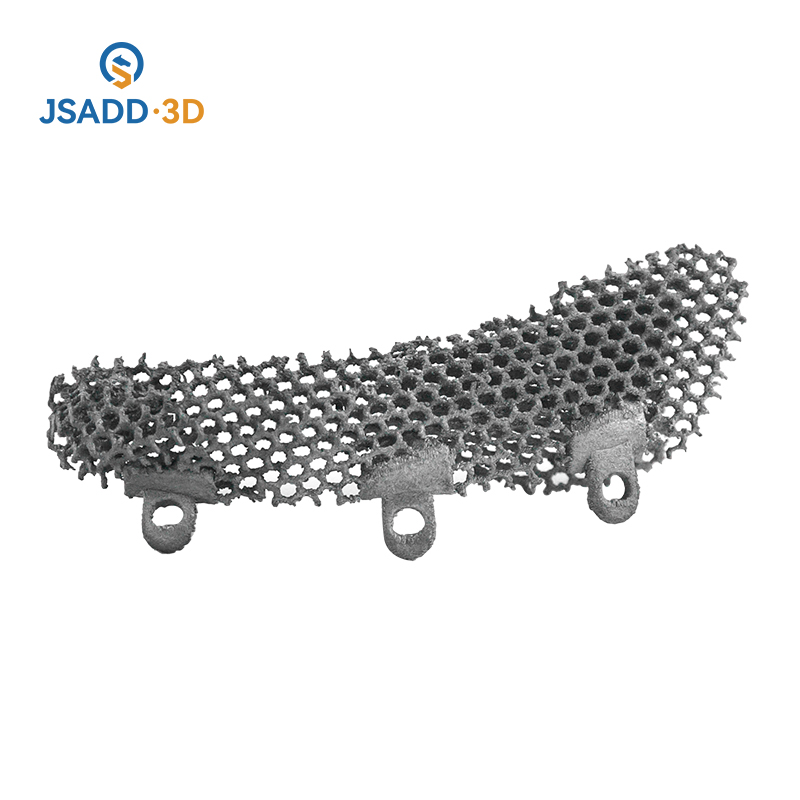Selective Laser Sintering (SLS) is one of the most widely used 3D printing technologies, known for its high precision, versatility, and ability to produce complex parts. It has become a cornerstone in industries ranging from aerospace to automotive and medical device manufacturing. In this article, we will explore the working principle of SLS, the materials used, its applications, and the advantages and disadvantages of this 3D printing method.
SLS is an additive manufacturing process that uses a laser to sinter powdered material, bonding the particles together to form a solid structure layer by layer. The process begins with a 3D model being sliced into thin cross-sections. A thin layer of powder is spread across the build platform, and a high-powered laser selectively melts the powder according to the cross-section of the part being printed. Once a layer is completed, the build platform lowers, and a new layer of powder is added on top. This process is repeated until the part is fully built. The unsintered powder surrounding the part acts as a support material, eliminating the need for additional support structures during the build.
One of the key advantages of SLS is its ability to create intricate geometries without the need for support structures. This makes it ideal for producing complex shapes with hollow sections, undercuts, or internal features, which are difficult or impossible to achieve with traditional manufacturing methods.
Materials Used in SLS Printing
SLS is highly versatile when it comes to materials, offering a range of powders suitable for different applications. The most commonly used material for SLS is nylon (also known as polyamide), which provides a good balance of strength, flexibility, and durability. Nylon-based powders, such as PA12, are widely used for both functional prototypes and end-use parts.
In addition to nylon, SLS can also be used with other materials, including polystyrene, thermoplastic elastomers (TPE), and metals. Glass-filled nylon is another popular choice for applications requiring enhanced strength and rigidity. For higher-performance parts, materials like titanium and stainless steel can be used, particularly in aerospace and medical industries, where high strength-to-weight ratios and resistance to heat and corrosion are critical.
The material selection in SLS is not only limited to plastic powders. Composite powders that include metal or carbon fiber additives are also gaining traction for applications that demand specific mechanical properties, such as increased strength, thermal resistance, or conductivity.
SLS technology is widely used in a variety of industries due to its versatility and ability to produce complex, durable parts. One of the primary applications is in the aerospace industry, where lightweight, high-strength parts are required. SLS allows for the creation of intricate geometries that traditional methods, such as machining or injection molding, cannot easily replicate.
Another important application is in the automotive industry, where SLS is used for producing functional prototypes, custom parts, and even final production components. The ability to create complex and customized geometries quickly and cost-effectively makes SLS a valuable tool for vehicle manufacturers looking to reduce prototyping costs and accelerate the design cycle.
In the medical sector, SLS is used for producing customized implants, prosthetics, and surgical tools. The ability to create patient-specific parts, such as personalized orthotics or dental implants, has revolutionized personalized medicine, allowing for better-fitting and more effective medical devices.
Additionally, SLS has gained popularity in consumer goods, fashion, and architecture for rapid prototyping and low-volume production. The technology is also widely used in creating functional parts for industries like electronics, industrial equipment, and defense.
Advantages of SLS Printing
The key advantages of SLS 3D printing include its ability to create complex geometries, its material versatility, and the absence of the need for support structures. The technology excels in producing highly functional, durable parts without sacrificing design freedom. This is particularly useful in industries such as aerospace, automotive, and healthcare, where both functionality and customization are essential.
SLS is also a highly efficient technology for low-volume production. Unlike traditional manufacturing methods, SLS can produce small batches of parts without the need for expensive tooling or molds. This makes it an attractive option for companies that require rapid prototyping or limited production runs.
Moreover, SLS parts are typically strong, durable, and heat-resistant, making them suitable for a wide range of industrial applications. The use of metal powders further expands the material capabilities, allowing for parts that offer the strength and precision needed for critical industries.
Disadvantages of SLS Printing
Despite its many advantages, SLS 3D printing does have some drawbacks. One of the main challenges is the relatively high cost of the equipment and materials, particularly for small-scale operations. The process requires a significant investment in high-powered lasers, powder handling systems, and post-processing equipment.
Another disadvantage is the surface finish of SLS parts. While the parts are generally strong and functional, they often have a rough surface texture compared to parts made through traditional injection molding or machining. This can sometimes require additional post-processing, such as sanding or coating, to improve the appearance or surface quality.
Additionally, while the SLS process can handle complex geometries, the build speed is slower compared to other 3D printing methods, particularly for large parts. The layer-by-layer approach means that the printing time can increase significantly as the size and complexity of the part grow.
Conclusion
SLS 3D printing is a versatile and powerful technology with wide-ranging applications across numerous industries. Its ability to produce complex parts without support structures, combined with its material versatility and suitability for functional prototypes and end-use parts, makes it an essential tool for modern manufacturing. However, its relatively high costs, slower build speeds, and rough surface finishes can present challenges for some applications. As the technology continues to evolve, it is likely that many of these limitations will be addressed, making SLS an even more valuable asset in the future of additive manufacturing.







